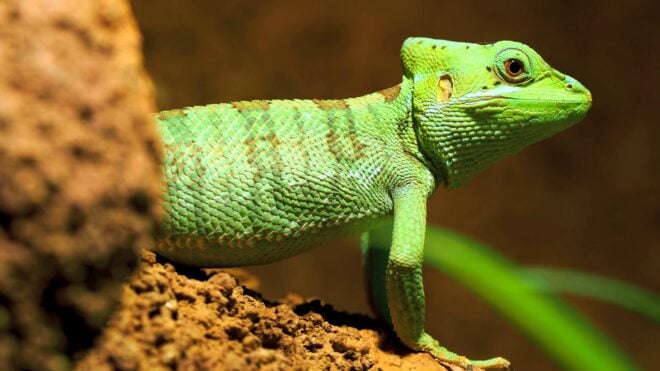We know our pups. We know their favorite toys, places to walks, brands of treats, and spots to be scratched.
But we don’t know our dogs the way other dogs know our dogs, like these two pooches that thinks the other is as rad as a rawhide bone.
When two canines meet, they get to know each other in a very distinctive way — and we’re not talking about the butt sniffing, either. According to Psychology Today, they instinctively pick up on very minute details in body language that us humans have a hard time perceiving, especially in regards to their tails.
For instance, did you know when a dog wags its tail, it can mean something other than happiness and excitement? The speed and direction the tail is wagging can also indicate important warning signs every pet owner should be aware of.
Yet, don’t fret! Picking up tail talk is actually much easier than you might think…
Tail talk is hard for us to decipher, but here’s a quick rundown of a few important basics.
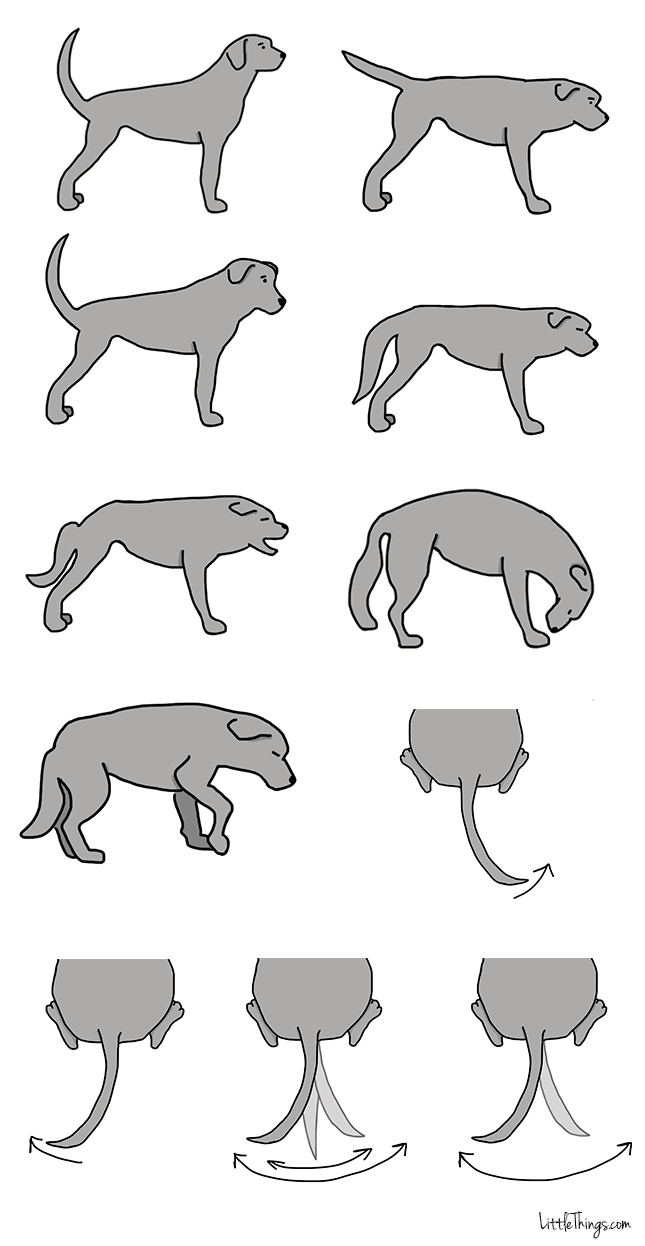
If a dog looks like this, looking straight ahead with its tail perked up, while encountering a new dog, (s)he is merely showing off his confidence by displaying dominance. Or, in tail talk: “Hi buddy! By the way, I’m the boss here!”

If a dog’s tail juts straight out, (s)he feels threatened.
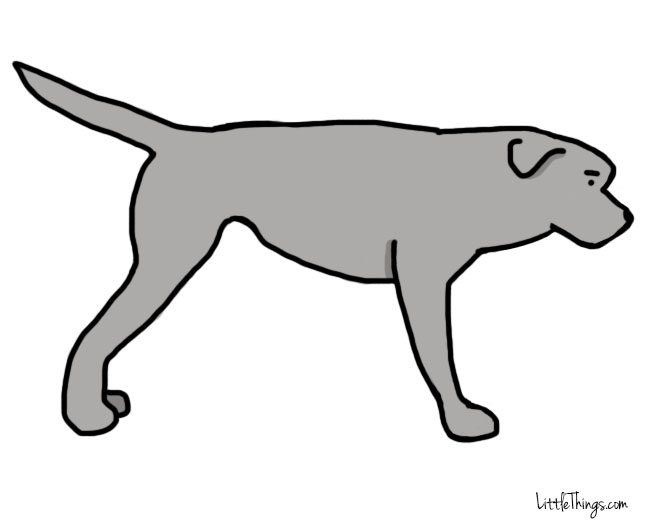
When a dog is in this position and his or her tail is also wagging back and forth, (s)he’s just trying to impress you.
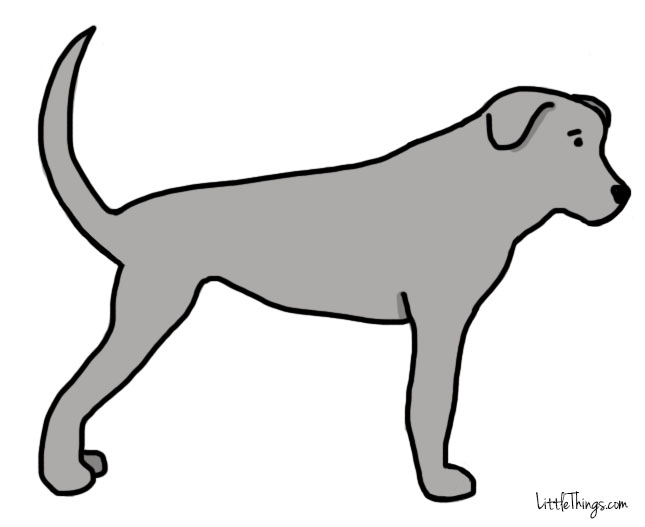
If none of his or her limbs are tightened and (s)he seems completely relaxed, the pup is completely unconcerned.
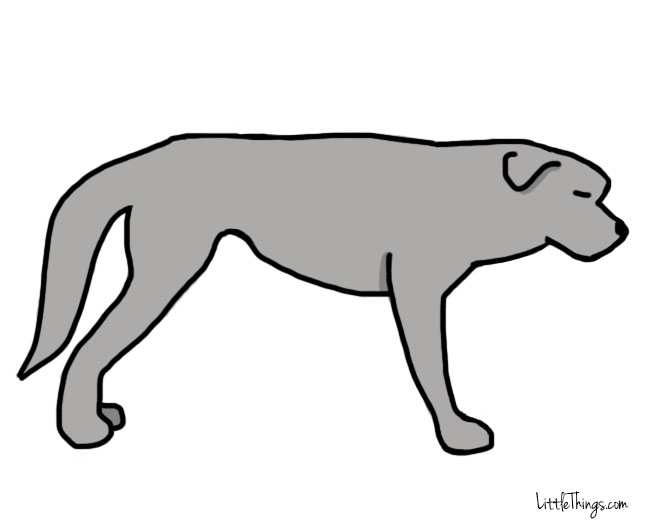
This body language, with his or her tail curled up and mouth open, means there’s an uncertain threat.
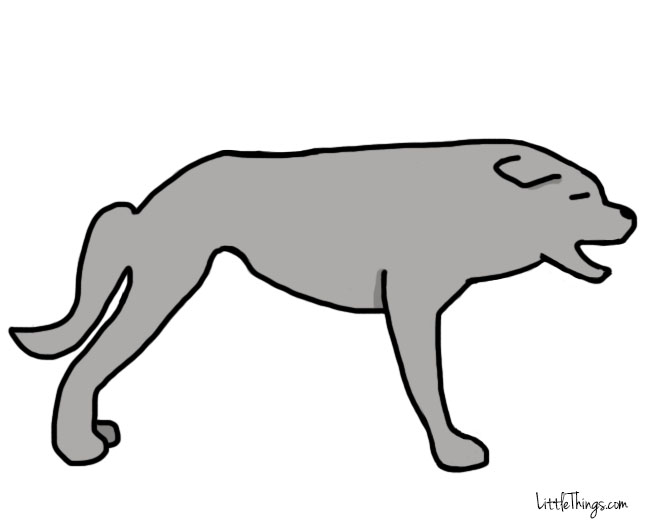
If your dog adopts this posture, (s)he’s saying, “Feed me!”
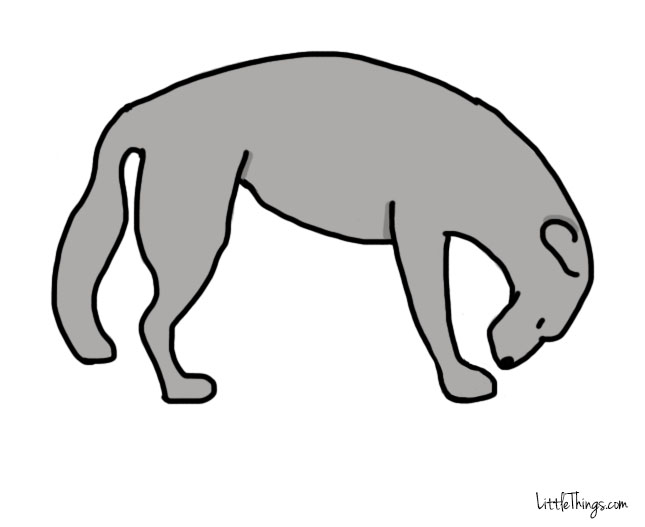
This position can be a bit worrisome depending on the pooch. It’s a subordinate position they take when they are around a dog of superior rank. It is the canine way of saying, “Woah, buddy. You’re cooler than me, do what you will.”
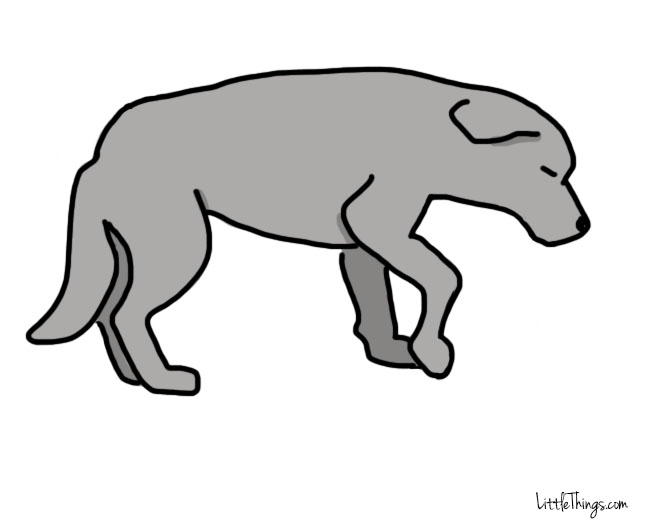
Of course, that's just the start. The direction and speed at which your dog wags its tail also communicates some very important information. Continue reading about tail-wagging information on page 2.
If a dog swings its tail to the right, (s)he's happy or excited. But there’s many other ways to translate a wag.
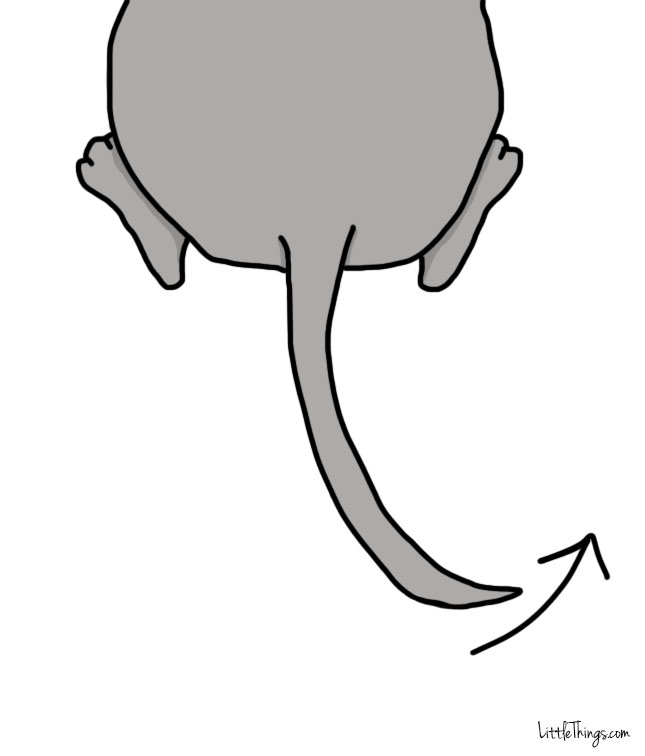
If a wag shifts to the left, this signifies that there is something wrong.

The speed of the wag is important to note as well. A dog’s tail will wag vigorously to the right if they see someone they know.
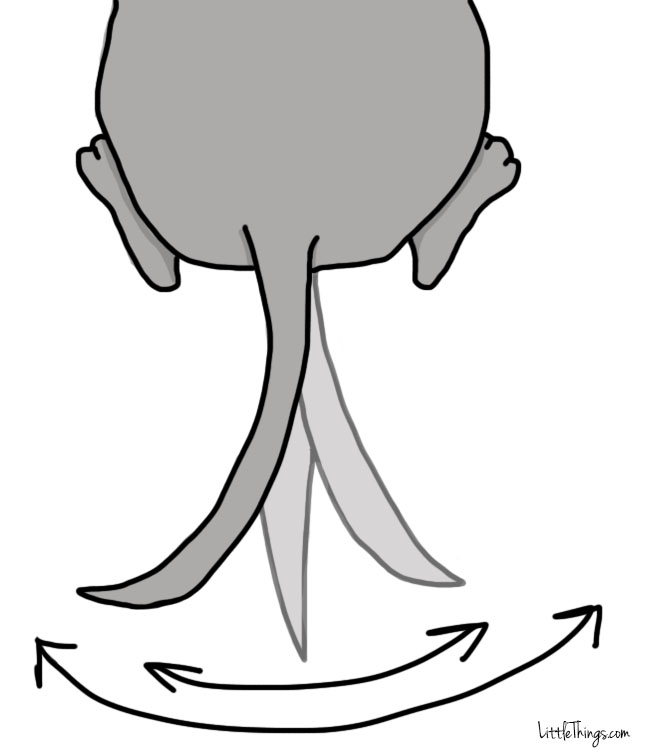
But if they spot someone that is unfamiliar to them, the tail will wag more slowly.
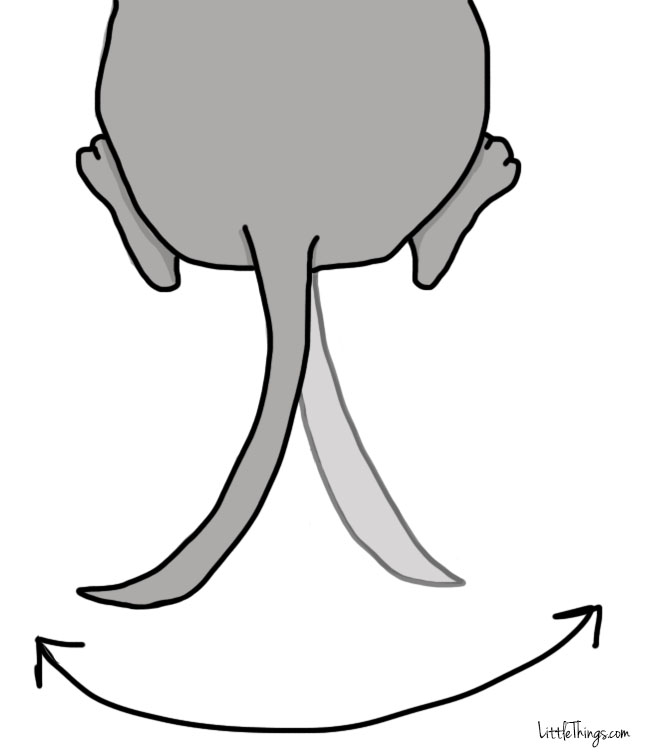
Have you ever noticed a dog behavior that you have a theory about? Let us know in the comments!
Please SHARE if you find dogs’ behaviors fascinating!
h/t: Psychology Today



